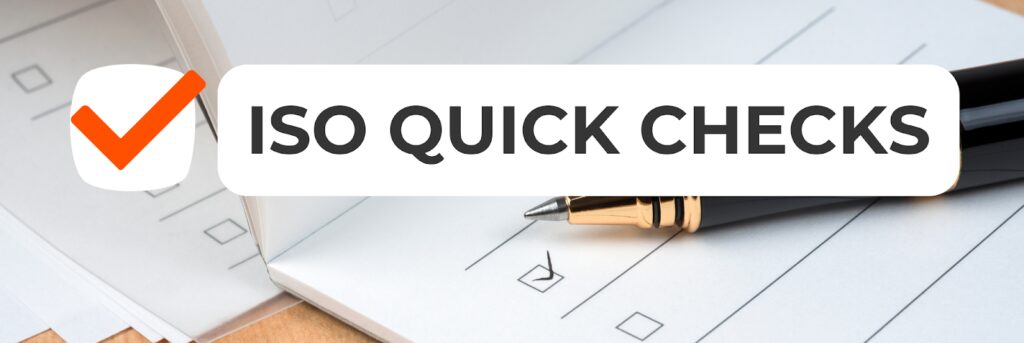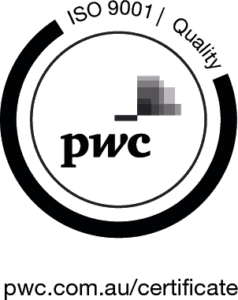Cracking the Code: How to Write Procedures for ISO Management Systems
Achieving Certification to one or more ISO Management System Standards is a significant milestone for any organisation, signalling a commitment to enhanced efficiency, best practices, and standardised processes. However, the Certification Process can be hard to navigate, with one of the key components and requirements being the development of clear and well-documented procedures.
These procedures not only define how specific tasks and processes should be executed within the organisation, but also serve as a guide to ensure that the established procedures align with the requirements outlined by the ISO Standards you aim to achieve.
Before we delve into the step-by-step rundown on how to write a procedure, let’s make sure you know the difference between a procedure, process and work instructions.
Procedures, Processes, and Work Instructions: What is the difference?
In short, processes provide the overall framework, procedures add more detailed structure, and work instructions offer precise, step-by-step guidance for executing tasks. To break it down further:
Let’s clarify with an example: In a typical sales process, you have the overarching actions and stages involved in converting a lead into a client. This includes stages like lead conversion, providing a quote, providing a product demo, and ultimately winning the client.
A procedure, within this sales process, would zoom in on a specific part, for example, how to conduct a product demonstration. It provides a structured breakdown of this particular step, outlining the necessary actions and guidelines.
On the other hand, a work instruction goes even deeper, offering a granular, step-by-step guide on executing a specific task within the product demonstration — detailing how to set up and configure the demonstration uniquely for each client.
In reality, the terms “procedure” and “work instruction” are often used interchangeably, which can cause confusion. However, for practical purposes, you need not be overly concerned about distinguishing between them in real-life applications.
Understanding the ISO Management System Standards
Before diving into the process of writing procedures, it’s essential to have a solid grasp of the specific ISO Management System Standard(s) your business is aiming to achieve Certification to. The four most common standards are:
Once you have identified the relevant ISO Standard(s), you need to ensure you thoroughly understand their requirements and guidelines. The International Organisation for Standardisation (ISO) provides comprehensive documentation for each standard, including the standard document itself containing the clauses and requirements, as well as implementation guidelines, and frequently asked questions (FAQs).
Did you know?
Common Types of Procedures
Below are a few examples of the many types of procedures that organisations may implement:
The specific procedures a company employs will depend on its industry, size, and unique operational needs.
Steps to Develop a Procedure for ISO Certification
1. Determine the Purpose and Scope of the Procedure
The first step is to ensure the overarching process is well defined, and then identify the areas of the process that require supporting procedures so employees know how to achieve the process outcome.
You may also need to review the applicable ISO Management System Standard requirements and the long-term objectives. This review should consider the scope of the Business Management System and the applicable regulations and industry requirements. It is also important to assess any potential risks associated with the activities mapped in the procedures in question. Additionally, considerations should be made for the resources available and other activities necessary to complete the procedure successfully.
Note
2. Gather Process Information
Each procedure needs a detailed description of all the activities required by the process. To write a procedure, you need to gather all relevant information. This includes inputs, output, activities, the person responsible for each activity and measurements, if any. A flowchart or a process map can help you sequence the work-flow of activities and gather all relevant details.
Another method that may be used to gather all the information is the Five Ws (also referred to as Five Ws and One How, 5W1H). This method includes questions whose answers are considered basic in information gathering or problem-solving. This method can help you define a procedure by answering all 5 W’s and 1 H’s:
We will add 2 more questions to the list.
This method will help you gather all the information that is required and will ensure that you don’t skip any useful information in the procedure.
3. Develop a Document Structure for Procedures
The fourth step is to create a standard document structure that will also act as a procedure template. This document is ideally built with the organisation’s brand guidelines in mind. A typical procedure template will include:
Document control is an essential requirement of all ISO Management System Standards. A well-defined structure and version history should be maintained for all procedures. All steps necessary to control the changes to the procedures should be followed to ensure that the requirements of your chosen standard are met.
Expert Tip
4. Document the Procedure, Review and Approve
Once all the information is gathered and you understand the scope and purpose of the procedure, it is time to write the procedure. Ideally, a subject matter expert should be the one to write the procedure to ensure accuracy.
The procedure should include all the necessary steps required but at the same time should not be voluminous. It should have just enough details for the staff to understand and follow. The procedure should be written without using jargon from the ISO Standard and using the language which the employees use in their day to day interactions. It is necessary that the procedures are not complicated and any reader is able to understand the steps easily.
After a draft is written, it should be peer-reviewed by a colleague or manager. Once reviewed and all review comments are incorporated, it is required that the accountable person approves the procedure before it is published for use in the organisation.
5. Communicate and Provide Training
The last and the final step is to communicate the approved procedure to all the relevant stakeholders. In case required, training should be provided to all stakeholders to make sure that the staff understand the procedure, implement and follow it successfully. Changes to the procedure should also be communicated whenever these are made.
Hiring an expert ISO Consultant to help you
Even though you now understand how to write procedures for your ISO Management System, we appreciate that the path to Certification Readiness can be complex and, at times, overwhelming – but we’re here to help you!
We’ve helped over 200 businesses develop effective management systems. Every business that has followed our recommendations has achieved Certification first time. That’s why we offer a Certification Readiness Guarantee – by following our proven planning process and advice, supported by our extensive industry experience, we can get you Certified first time – Guaranteed!
Call us now on 1300 614 007 or book your online FREE Strategy Session to solve any further questions about the Certification Process, or to discuss a tailored solution for your business.
About the author
Andressa (alias Andy) is the General Manager of ISO Certification Experts and ICExperts Academy, heading our Marketing department and coordinating the internal improvement initiatives and projects. With an MBA in Project Management, and over 10 years of experience in customer service and project management across many industries, she brings valuable knowledge to the business and our operations. Alongside her professional expertise, Andressa holds a genuine passion for sustainability and the environment.
All information on this blog site is for informational purposes only. As this information is based on our professional experience, opinion, and knowledge, we make no representations as to the suitability of this information for your individual business circumstances. Especiality Pty Ltd trading as ISO Certification Experts and all related businesses and brands will not be liable for any errors, omissions, legal disputes or any damage arising from its display or use. All information is provided as is, with no warranties and confers no rights.
We will not be responsible for any material that is found at the end of links that we may post on this blog site. The advice, ideas, and strategies should never be used without first assessing your own personal business situation or seeking professional and/or legal advice. Information may also change from time to time to suit industry and business needs, requirements and trends.
















